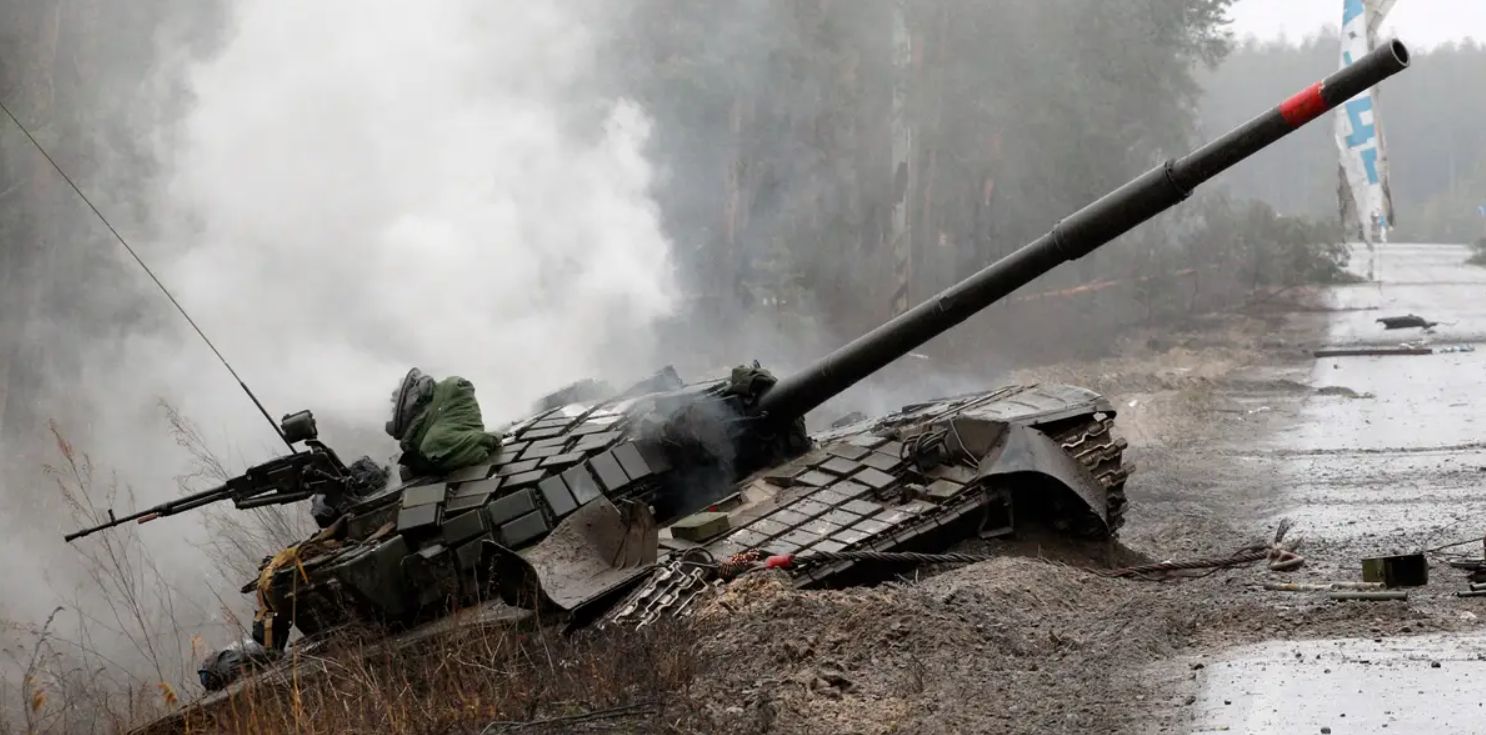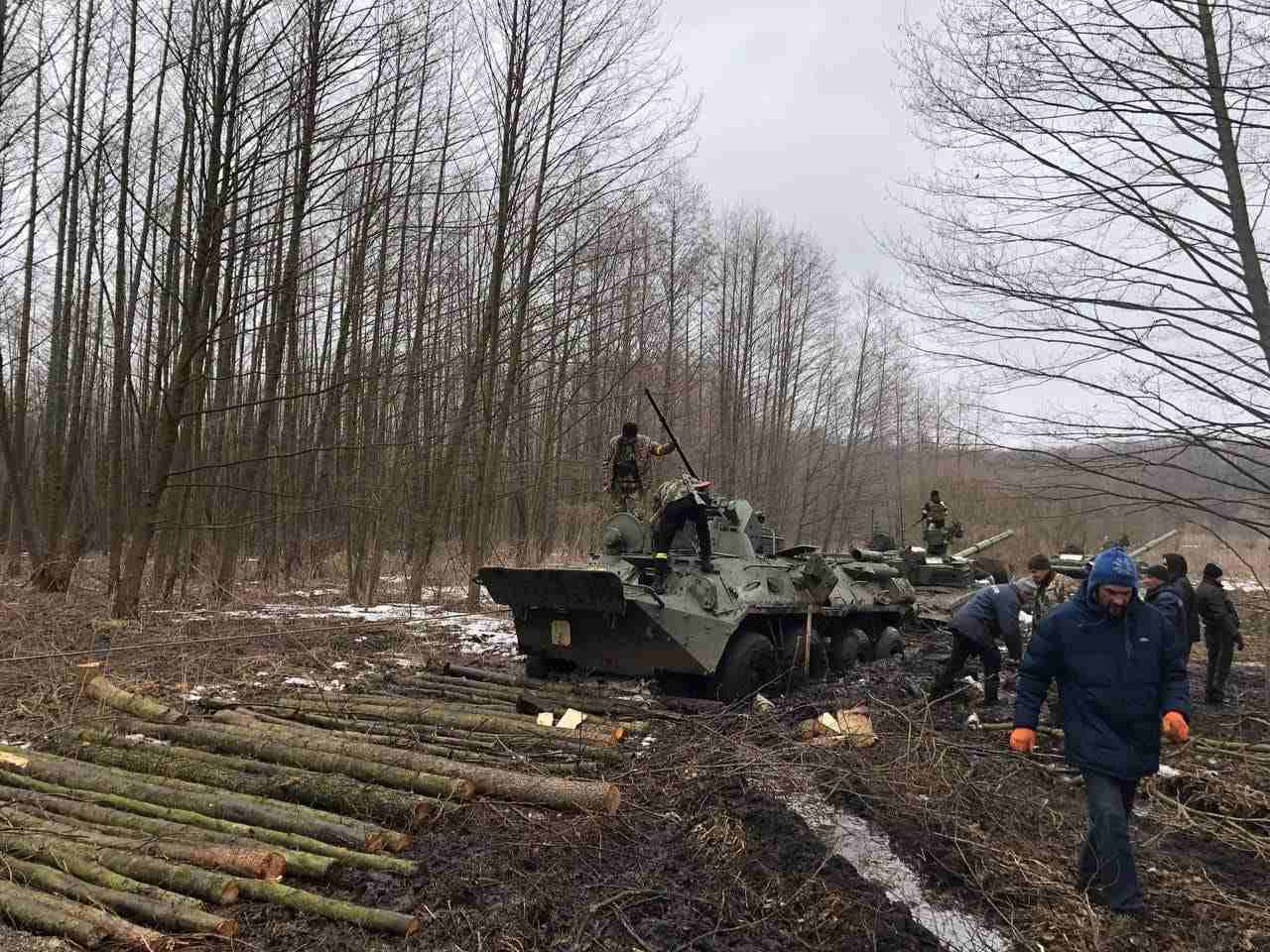Ukraine’s Defense Minister Oleksii Reznikov recently announced that preparations for a counteroffensive were “coming to an end.” However, as the anticipation for a mammoth Ukrainian military operation grows, there are concerns that Ukraine’s soggy black mud, known as “rasputista” in local parlance, won’t allow it yet.
Since early April, Russian media has highlighted how the black sticky mud poses a hurdle to Ukrainian military vehicle operations. Although these claims have often been labeled as an “exaggeration” by Western intelligence, a Ukrainian counteroffensive seems stuck in the “mud” now.
Nearly everything is available to the 43rd Separate Artillery Brigade of Ukraine’s soldiers to launch the anticipated spring counteroffensive. They have lots of ammo, are well-rested, and have replaced their outdated Soviet artillery with several sophisticated German-made self-propelled howitzers.
However, the Ukrainian artillery brigade is barely moving forward, halted not by fierce Russian attacks but rather by a foe that is no less tenacious: the thick mud of central Ukraine, according to a recently published report in The New York Times.
“Until the weather improves, there will be no counteroffensive,” said a lieutenant with the brigade named Serhii. “The vehicles will get stuck, and then what will we do if the shooting starts?”
Ukraine’s tank brigades have now deployed the sophisticated Leopard-2 tanks, along with the cutting-edge Infantry Fighting Vehicles (IFVs) received from the NATO allies.
Besides the Leopard-2 tanks, Kyiv will also deploy the British Challenger-2 soon. Not just that, the Patriot missile defense has also taken positions as the anticipation for a massive Ukrainian counteroffensive grows.

However, the counteroffensive has been put on hold due to Ukraine’s black mud, known for restricting military operations. The spring mud is deep and black and has a very squidgy consistency. It is the one hurdle that the Ukrainian military finds challenging to conquer despite its grit and preparedness.
It tampers with weaponry and removes troops’ boots. The endless spinning of wheels and treads only serves to sink military vehicles further into the muck. The mud renders fields and unpaved roads impassable for around a month in the fall and spring. Tanks, troop transports, and artillery pieces all come stuck in the muddy ground.
Since the rasputitsa restricts movement, it favors the defending military. The Russians have also reportedly faced problems with advancing inside Ukraine. However, as they dig in positions to defend against an imminent offensive by Kyiv, the rasputitsa naturally favors them. Moscow’s troops have fortified Crimea as the threat of a Ukrainian offensive looms.
The US-based think tank Institute for the Study of War in Washington, DC, noted in an assessment, “Spring is the nightmare season for fighting in Ukraine.” To make matters worse, Ukraine has received more rain than usual this spring which has prolonged the season and kept the black bud wetter throughout April.
On its part, although Ukraine has been pushing back in some regions and carrying out attacks on Russian positions from the frontlines, a decisive offensive that would see big action with Ukrainian armor and artillery is yet to begin. And previous evidence suggests that an offensive will have to wait.

Ukraine’s Own Geography Limiting Its Attack
Earlier, there were predictions in the West that Ukraine might launch a massive counteroffensive against Russia in early May. Currently, vehicle movement and artillery fire are frequent along Kyiv’s front lines, and explosions frequently hit important Russian sites in occupied territory.
Ukraine is currently bested by a massive barrage of missiles daily aimed at destroying its ammunition and overwhelming its defenses. Not just that, military experts believe that Russia is conducting missile strikes on Ukraine at a time when it is moving equipment and troops to the battlefront for a counteroffensive and is most vulnerable.
However, a counteroffensive remains elusive while Kyiv faces the twin task of preparing for launching operations while simultaneously contending against incessant Russian attacks.
Videos posted between April 7 and April 10 on various social media platforms showed Ukrainian armor either trapped in the slushy ground or damaged, or both, in locations allegedly close to Bakhmut and Donbas, where intense combat had been raging for several weeks.
A video taken on April 8 in Bakhmut revealed several armored vehicles that had been destroyed, including a BTR-4, maybe a T-72 tank, three Humvees, and an M113 troop carrier. In one video, a BTR and BMP are seen attempting to tow each other, and an MRAP, but the BTR’s wheels become caught in the deep muck.
In the latest incident, a 60-ton Panzerhaubitze 2000s was seen being towed when it got stuck in the mud, raising concerns about a possible counteroffensive that could turn into a battlefield debacle unless the weather and the mud decide to cooperate.
As per the NYT report, Serhii decided to remove all of the new Panzerhaubitze 2000s from the battlefield because he was concerned that the 60-ton howitzers wouldn’t be able to escape if a bullet hit them. At the unit’s rear position in the Zaporizhzhia region of southeast Ukraine, soldiers spent the weekend scraping off a thick layer of mud from treads and armored plating.
Previously, unverified reports proliferated Russia’s local media, suggesting that a Russian sabotage unit had reportedly sunk a Leopard-2 tank operating in the Kherson region. The unit alleged they could not drag it to the rear and drowned it in a swamp.
Even the recovery vehicles that retrieve other trapped vehicles are stuck in the mud. A Ukrainian BTS-4 armored recovery vehicle could be seen plastered with mud on its tracked wheels in a video that went viral on social media last week.

There is pressure on Ukraine to launch a counteroffensive and end the standoff, which might extend beyond 2023. It could lower the morale and test the patience of Ukraine’s Western backers if the war doesn’t advance in some way, such as by recovering land that has been seized or inflicting significant harm on Russian forces.
A plausible location for Ukraine’s major offensive is the Zaporizhzhia region, which is half-occupied by Russian soldiers and has huge farm fields that descend to the Azov Sea. But perhaps the most unpredictable factor commanders must consider before launching the attack is the weather amid an unusually wet spring.
According to Ukraine, the counteroffensive’s main artillery and heavy tank platforms will be appropriate for the solid pavement created by the heat of late spring and summer. But nobody knows when that will occur.
- Contact the author at sakshi.tiwari9555 (at) gmail.com
- Follow EurAsian Times on Google News




